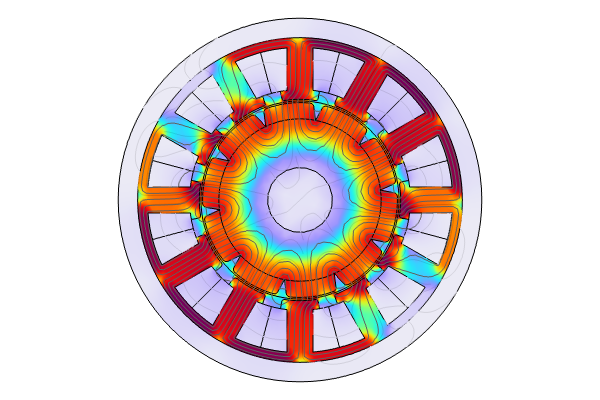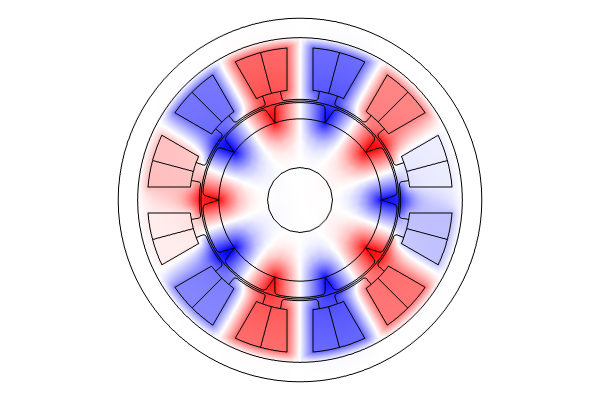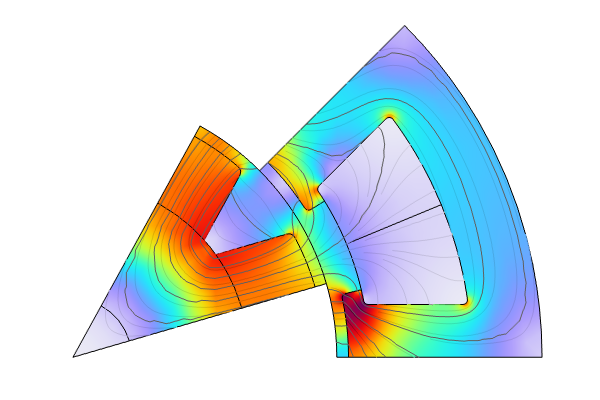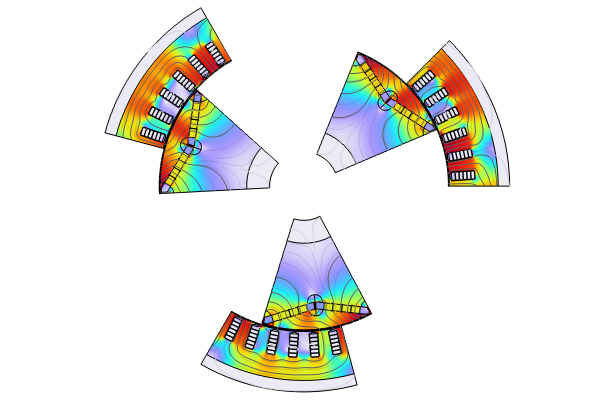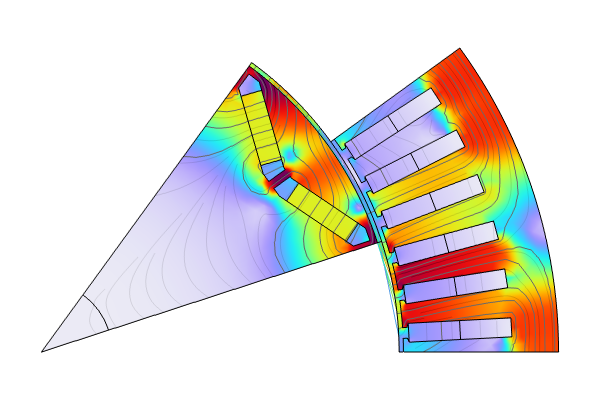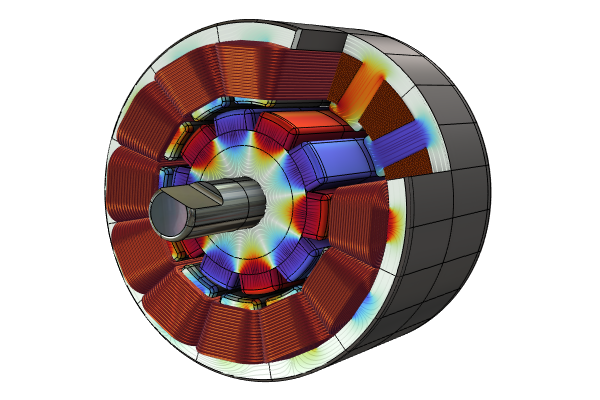Introduction to 3D Motor Modeling
Throughout this course, we have covered a number of different motor modeling approaches; however, modeling in 3D adds complexity that you will need to account for when setting up your models. For example, the added dimension will increase the complexity of your mesh. In some cases, you can use swept meshing to help ensure that the mesh is viable and that the model can be solved with your available time and computational resources. Additionally, the coil configuration will often require an analysis of the coil geometry to solve your model in 3D. You may also need to consider the mixed formulation in order for a 3D model to converge. This approach combines the magnetic vector and scalar potentials.
Watch the video below to learn more about these considerations and see demonstrations of 3D motor modeling.
Tutorial: Motor Modeling in 3D
Further Learning
- Using Swept Meshes for Model Geometries: course covering when and how to apply swept meshes to your geometry
- Introduction to Building 3D Coil Models: course on how coils can be modeled in 3D
- How to Model Rotating Machinery in 3D: blog post describing how 3D machinery can be modeled
- Guidelines for Modeling Rotating Machinery in 3D: sequel blog post to How to Model Rotating Machinery in 3D
- How Do I Use Gauge Fixing in COMSOL Multiphysics®: blog post that describes how to implement gauge fixing
- Magnetic Signature of a Submarine: tutorial model that demonstrates how the scalar potential can be manually fixed at points in the geometry to improve convergence
- Permanent Magnet Motor in 3D: tutorial model of a motor and the eddy current losses in 3D
- Modeling of an Electric Generator in 3D: tutorial model of a 3D motor model created with sector modeling
- Motor Tutorial Series: full tutorial model series and related materials
请提交与此页面相关的反馈,或点击此处联系技术支持。


